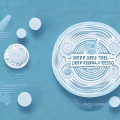Cupping therapy is a traditional practice that has been used for centuries in different parts of the world. This ancient healing technique involves creating suction on the surface of the skin using cups made of various materials, including glass, bamboo, or silicone. Cupping therapy is known to promote healing, relaxation, and overall wellness, and it has become increasingly popular in recent years, especially among those seeking holistic health solutions.
The History of Cupping Therapy: Tracing Its Roots to Ancient Times
Cupping therapy has been used in different parts of the world for centuries. In ancient Egypt, cupping was mentioned in the Ebers Papyrus, one of the oldest medical textbooks in the world. In traditional Chinese medicine, cupping was used as a way to balance the flow of energy or “qi” in the body. Cupping was also practiced in ancient Greece, where it was used as a treatment for respiratory diseases.
In modern times, cupping therapy has gained popularity in the Western world as a form of alternative medicine. It is believed to help with pain relief, inflammation, and relaxation. Cupping therapy involves placing cups on the skin and creating a vacuum to suction the skin and underlying tissues. The cups can be made of various materials such as glass, bamboo, or silicone. While cupping therapy has been used for centuries, it is important to consult with a healthcare professional before trying it as a treatment option.
How Does Cupping Therapy Work? Understanding the Science Behind the Practice
Cupping therapy works by creating suction on the surface of the skin. This suction increases blood flow to the area and promotes healing by stimulating the body’s natural healing processes. Cupping also activates the lymphatic system, which helps to flush out toxins from the body. The suction created by the cups also helps to loosen up tight muscles and promote relaxation.
In addition, cupping therapy has been found to have a positive effect on the immune system. The increased blood flow and lymphatic drainage can help to boost the body’s natural defenses and improve overall health. Cupping therapy has also been used to treat a variety of conditions, including chronic pain, respiratory issues, and digestive problems. While the exact mechanisms behind cupping therapy are still being studied, many people have found it to be a safe and effective alternative therapy for a range of health concerns.
The Benefits of Cupping Therapy: From Pain Relief to Stress Reduction
Cupping therapy offers a wide range of benefits. It is known to be an effective treatment for pain relief, particularly for conditions such as back pain, neck pain, and headaches. Cupping therapy is also believed to reduce stress and promote relaxation, making it an excellent choice for those dealing with anxiety or insomnia. Cupping therapy is also an effective treatment for respiratory conditions such as asthma and chronic cough.
In addition to these benefits, cupping therapy has also been found to improve skin health. The suction created by the cups helps to increase blood flow to the skin, which can promote healing and reduce the appearance of fine lines and wrinkles. Cupping therapy has also been used to treat skin conditions such as acne and eczema. Overall, cupping therapy is a versatile and effective treatment option for a variety of health concerns.
Different Types of Cupping Therapy: Wet, Dry, Fire, and More
There are several different types of cupping therapy, including wet, dry, fire, and massage cupping. Wet cupping involves making small incisions on the surface of the skin before applying the cups to the area. Dry cupping involves creating suction without making any incisions. Fire cupping involves using a flame to heat the cups before applying them to the skin. Massage cupping involves using the cups to massage the skin and improve circulation.
Another type of cupping therapy is called magnetic cupping. This involves placing small magnets inside the cups before applying them to the skin. The magnets are believed to enhance the healing effects of the therapy by stimulating the body’s natural energy flow. Additionally, facial cupping has become increasingly popular in recent years as a non-invasive way to improve skin health and reduce the appearance of fine lines and wrinkles. This technique involves using smaller cups on the face and neck area to gently lift and massage the skin. Overall, cupping therapy has a long history of use in traditional medicine and continues to be a popular alternative therapy for a variety of health concerns.
The Role of Cupping Therapy in Traditional Chinese Medicine
Cupping therapy is an important part of traditional Chinese medicine. In TCM, cupping is used as a way to balance the flow of energy or “qi” in the body. Cupping is believed to remove blockages in the meridians or energy channels, allowing for the smooth flow of energy throughout the body. Cupping therapy is often combined with other TCM practices such as acupuncture and herbal medicine for optimal health and wellness.
Additionally, cupping therapy is also used to treat a variety of conditions such as pain, inflammation, respiratory issues, and digestive problems. The suction created by the cups helps to increase blood flow and stimulate the immune system, promoting healing and reducing symptoms. Cupping therapy has gained popularity in recent years, with many athletes and celebrities using it as a form of alternative therapy for pain relief and relaxation. However, it is important to seek out a qualified TCM practitioner for cupping therapy to ensure safe and effective treatment.
What to Expect During a Cupping Therapy Session
During a cupping therapy session, the practitioner will use cups to create suction on the surface of the skin. The cups may be left in place for a few minutes, or the practitioner may move them around to create a massage-like effect. You may experience a sensation of warmth or pressure during the treatment, but cupping therapy is generally not painful. After the session, you may notice red marks or bruises on the skin, which usually disappear after a few days.
Safety Considerations for Cupping Therapy: Avoiding Side Effects and Risks
Cupping therapy is generally safe, but there are some precautions you should take to avoid side effects and risks. It is important to choose a licensed and experienced practitioner who follows proper sanitation and hygiene practices. You should also avoid cupping therapy if you have a skin condition, open wounds, or are pregnant. Cupping therapy should not be used as a replacement for medical treatment, and you should always consult with your healthcare provider before trying any new therapies or treatments.
DIY Cupping Therapy: How to Use a Cupping Set at Home
If you are interested in trying cupping therapy at home, you can purchase a cupping set online or at a health food store. To use a cupping set, apply some oil or lotion to the area you want to treat, then place the cup on the skin and create suction by pressing on the top of the cup or using a pump. You can leave the cups in place for a few minutes or move them around for a massage-like effect. It is important to start with a low suction level and gradually increase it as you become more comfortable with the practice.
Combining Cupping Therapy with Other Holistic Practices for Optimal Health
Cupping therapy can be combined with other holistic practices for optimal health and wellness. Acupuncture and herbal medicine are often used in conjunction with cupping therapy as part of a comprehensive treatment plan. Other practices such as yoga, meditation, and massage can also help to support the benefits of cupping therapy. By combining different holistic practices, you can unlock the full potential of your body’s natural healing processes and achieve optimal health and well-being.





